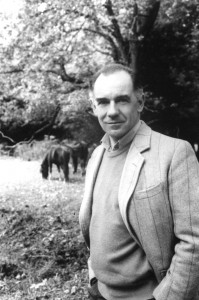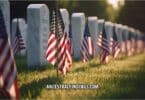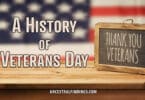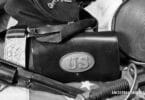Strangely, I suspect it was Viking ancestors who drew me to New York.
For centuries my father’s family lived on Britain’s biggest tidal river, the Severn, on which there was a huge trade with the interior, and through the port of Bristol with America. In the nineteenth century they were in shipping from the Baltic to the Black Sea, and on the great rivers of Europe–the Rhine, the Danube, even the Russian River Dnieper. I myself was born beside a river–the Avon in Sarum. So when I first encountered New York’s great harbor and the Hudson River as a teenager, and came to understand their historic canal and railroad links to the vast spaces of the Midwest, I felt both the thrill of a new adventure, and a deep sense of homecoming.
I first considered writing New York in 1991. I’d been in the city for a decade, was married to an American wife and sending my children to New York schools. I was even on the board of a coop building. But I wasn’t sure how to organize such complex material, and for many years I put the project aside.
It was kind encouragement and old-fashioned editing from William Thomas at Doubleday that finally persuaded me to try again. And soon I was hooked.
New York’s gift to the storyteller is magnificent: Indian and Dutch beginnings; larger-than-life historical characters like Lord Cornbury, the transvestite British Governor, the socialite Mrs. Astor, and the titanic J.P. Morgan; huge events from the Revolutionary War and the Civil War–when New York threatened to secede from the Union–to the Crash of ’29 and the tragedy of 9/11. But it’s the ordinary people I discover in my research–African slaves, Irish laborers, society ladies and sweatshop workers–whose lives move me most, and who provide so many of my plots and characters.
My own personal experiences also helped. I descend from both Philadelphia Quakers and Carolina colonists whose families were separated by the Revolutionary War. That helped give me insight into the agony of Patriots who, until the British government denied their claims, had always, like Ben Franklin himself, thought of themselves as free-born Englishmen. One of my closest friends since university is an Italian immigrant. Understanding the poverty and humiliations of her childhood helped me create the book’s Caruso family who came through Ellis Island and lived in Little Italy.
I also love discovering how things work. It was as fascinating to study the history of Wall Street banking–and how financial crises always repeat themselves!–as it was to learn how the Empire State Building was constructed.
But above all, what I love about New York is that people have always come there in search of freedom, and usually found it. I was lucky to be born beside Sarum’s Avon. But I’d like my New York children to scatter my ashes in the Hudson. —Edward Rutherfurd
— This text refers to the Hardcover edition.








